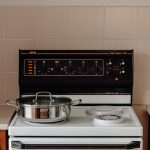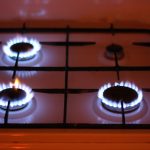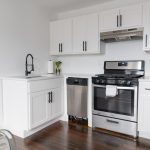Address
14, Bola Arowolo street, Atunrase estate, Gbagada, Lagos
Work Hours
Monday to Friday: 8AM - 6PM

Do you know what kind of oven you have? Yes, there are different types of ovens—conventional, convection, gas and electric—and they all work just a tiny bit differently. So to ensure that you consistently get a great meal, you’ll want to double check how your oven functions.
These ovens have two separate heating elements, the first is located on the bottom or floor of the oven, and another one on the top part of the oven cavity. These two elements transfer heat to cook the food, and most recipes that call for an oven base their instructions assuming you’ll be using a conventional oven.
Convection ovens on the other hand, have a fan in the back of the oven and a system that circulates hot air around the food that is baking or roasting. This allows for better browning and crisping, as it transfers heat more effectively. Keep in mind that convection ovens tend to have a faster preheating and cooking time, so you’ll want to make sure that you adjust cooking times to account for this. Learn more with this guide on the difference between convection and conventional ovens.
Gas ovens tend to preheat faster than conventional electric ovens, though they might fluctuate in temperature. You can place a baking stone on the bottom of the oven to help distribute the heat better.
Electric ovens have two heating elements, one on top and the other on the bottom, and many have a hidden bake element underneath the oven floor to make cleaning up drips and spills easier. They may take longer to preheat, so take that into account as you prepare your meal. The heat from this type of oven is also drier, so you may also need to add steam for certain recipes that need to rise (like bread).

Depending on what kind of oven you’re using and what you’re cooking, you’ll want your oven rack placements to be useful for what you’re trying to make. For instance, when using a convection oven, you’ll want to use the lower rack for baking and roasting large cuts of meat, and the center of the oven for standard cuts, while the top rack should be used for broiling. If you’re using an electric oven, you’ll want your rack to be positioned in the center, unless otherwise stated in a recipe. For specifics on how to place your oven racks, consult your owner’s manual.
If you’re using a gas oven and want to broil, you may have a broiler drawer that’s located on the bottom of the oven. However if you want your food to get more browning or crispness within the oven cavity, you’ll want to position your rack higher up. Remember that with gas ovens heat fluctuates, so rotate your dishes to ensure even heat distribution, and position dishes in a way that doesn’t block the heat from reaching items that may be on the upper rack.

Preheating your oven is a crucial part of achieving a great cooked meal. Food needs the continuous heat to cook evenly and thoroughly, and preheating your oven can prevent overcooking or undercooking. Allow time for proper preheating, and avoid opening the door so the heat doesn’t escape.
While you can use the temperature a recipe calls for if you’re using an electric oven, convection ovens may need lower temperatures than conventional or electric ovens. Subtracting 25ºF from the temperature a recipe calls will give you the temperature you should use, though temperatures may vary based on your oven and food you’re preparing. For more specific information on your ovens’ temperature settings, check your owner’s manual.
The time it takes to preheat an oven varies by oven, and some newer models have quick-preheat features. However, it usually takes about 10-15 minutes to preheat an oven to 350ºF, with an additional increase of 5 or so minutes per every 100 degrees above 350ºF. Therefore, preheating an oven to 400-450ºF or above typically takes about 15-20 minutes.

Keep an eye on your food when it’s in the oven to make sure that the temperature stays consistent and that your dish cooks evenly. If you notice that your dish is browning unevenly or that baked goods like muffins are different shades, it may be because of hotspots. If that’s the case, rotate your food to ensure even cooking.
Your oven works best when you don’t overcrowd it with dishes. If you have to place more than one dish, use both racks, and stagger the dishes so that heat can travel throughout the oven. Avoid opening the door when you check on your food, and instead rely on your oven window and an oven thermometer. Most importantly, don’t forget to set a timer!

Depending on the model of your oven, you may have an option to keep your food warm prior to serving. If you have an older oven or simply don’t have that feature, you can keep food warm by lowering the temperature to 200ºF, and covering your food with aluminum foil. For crispy or breaded food items, use a cooling rack on top of a cookie sheet, and place items in a single layer. To avoid the flavor profile or consistency of your food to change, don’t keep your food in the oven for longer than an hour.

Keep your oven’s temperatures consistent by cleaning your oven on a regular basis. Clean up any food or liquid that falls to the oven floor, since leaving them in the oven could create smoke and overheat your oven and transfer unpleasant flavors to your food.
You can use your oven’s self-cleaning feature (if available), just remember to wipe the inside clean of any crumbs and debris after it finishes cleaning. If you don’t have an oven with a self-cleaning option, make a paste of baking soda and water and apply with a soft sponge, and use white vinegar to remove the paste.




